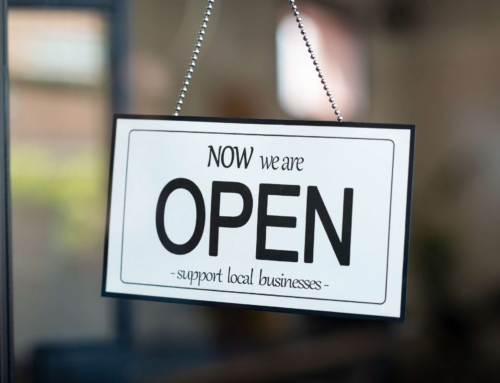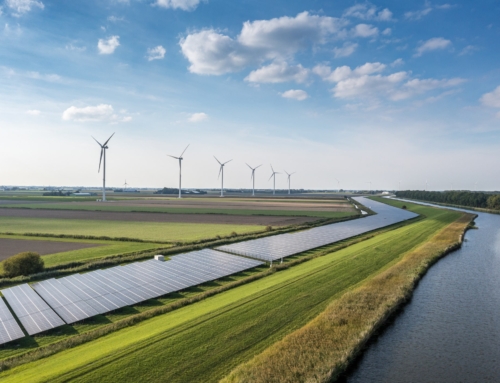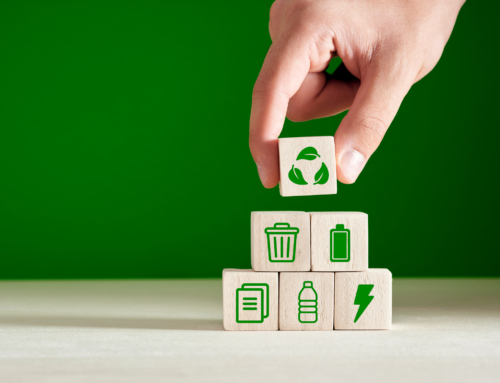Using wind energy is more affordable and widespread than in the past. Wind turbines generate electricity using offshore wind turbines on oceans and lakes, making it easier to access. At Kiwi Energy, we match your electricity with Renewable Energy Certificates — meaning you can support wind energy production, even if you don’t live in an area where wind energy is directly available.
Wind energy as a renewable and widespread electricity source is growing. Recently, the U.S. passed a historic milestone of having more than 100 gigawatts of total wind energy capacity, according to CNBC, because of a large amount of recent installations.
The CEO of the American Wind Energy Association said, “Wind now supplies clean and efficient power to the equivalent of 32 million American homes, sustains 500 U.S. factories, and delivers more than one billion dollars a year in new revenue to rural communities and states.”
Wind energy can help our economy and environment. If you’re thinking of getting your electricity from wind power, the list of wind energy pros and cons below can help you decide.
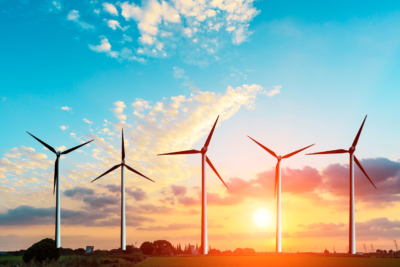
Pros of Wind Power
“Renewable energy is a clear winner when it comes to boosting the economy and creating jobs.”
-Tom Steyer
To start our wind energy pros and cons list, we’ll explain how wind energy can help improve our economy and protect our environment. Wind technology is still improving. In a few years, a list of wind advantages and disadvantages will probably include even more advantages than these.
1. Renewable Energy Source
Let’s start with the biggest one here. Wind energy is sustainable. As long as the earth is spinning and weather systems are moving, winds will be blowing. It is a resource waiting to be tapped. Any discussion of wind energy pros and cons needs to acknowledge that.
While we understand and discuss later in this article that wind varies in terms of its presence and strength, that doesn’t remove the very large benefits to utilizing the inexhaustible resource that is the wind. Strategic placement of wind farms and improvements in the technology’s ability to harness the energy the wind generates promise to greatly reshape the energy pollution issues we are currently facing.
2. Wind Energy Creates Jobs
In 2017, the wind energy sector accounted for about 200,000 jobs in the United States. Current projections estimate that this number will rise to 250,000 jobs sometime in 2020. Also, wind energy infrastructure needs to be built. This creates jobs wherever construction takes place. Whole projects can take years to finish and of course, there is the maintenance and upkeep to consider. Then, there are the manufacturing jobs for the materials needed to build the facilities and maintain them to consider as well. (Source: American Wind Energy Association)
3. Benefits Rural Populations
In rural areas where open space is a more available resource, wind energy can have a significant impact. Communities far from urban power grids can benefit from locally produced wind energy. While each situation will be different, urban areas can even see a lower cost of energy due to the offset the local wind farm produces.
4. Benefits Off-Grid Communities and Businesses
Another of the pros of wind energy for rural areas is the potential for energy independence. Homes and facilities located far from power grid hubs can use wind energy to enhance their self-reliance.
5. A Clean Financial Boost to the Economy
As wind energy currently stands, it has a total economic impact of over 20 billion US dollars, but it is expected to reach 24 billion dollars or more by the end of 2020.
6. Clean Energy Source
Wind energy is also more environmentally friendly than fossil fuels. Construction and materials used to build wind energy turbines and their networks represent the bulk of their carbon footprint. This impact is later recouped by the positive environmental effects of wind energy. Wind energy itself produces no air or water pollution. (Source: National Geographic)
7. Space Savings
While contemporary wind turbines might seem large and require open spaces, they still allow for large amounts of usable space on the ground below. Unlike large fossil fuel power plants, the land surrounding wind turbines can be used as grazing land for farm animals or even as farmland.
8. Growing Possibilities
Like other emerging technologies, the pros of wind energy include more possibilities as technology develops. Residential wind production could be as common as rooftop solar panels, for example.
New advancements in wind turbine technology have allowed for changes to the overall size and shape of wind turbines. There are even efforts to develop bladeless wind power that promises new changes to the wind energy industry as a whole.
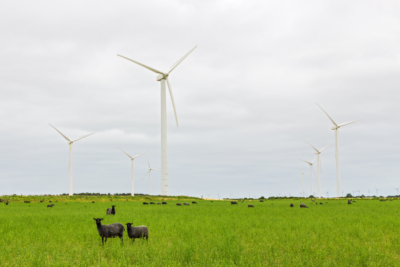
Potential Cons of Wind Energy
There are some challenges to using wind energy effectively. There are challenges to anything worthwhile. But there isn’t any honest doubt that wind energy will be a part of our energy future. Scientific American expressed this point well when they wrote:
Because the wind blows during stormy conditions when the sun does not shine and the sun often shines on calm days with little wind, combining wind and solar can go a long way toward meeting demand . . .
-Mark Z. Jacobson & Mark A. Delucchi, Scientific American, Nov. 2009
As we further explore wind turbines’ pros and cons, we hope you see the cons as puzzles that can be solved or as debatable points. They’re all solvable problems.
1. Investment Costs
One of the primary cons of wind energy is the cost associated with constructing wind energy facilities. The job creation and future carbon benefits can offset this factor, but the need for significant upfront investment remains a reality for companies seeking to make this kind of energy more mainstream.
“The costs for a utility-scale wind turbine range from about $1.3 million to $2.2 million per MW of nameplate capacity installed. Most of the commercial-scale turbines installed today are 2 MW in size and cost roughly $3-$4 million installed.” – Windustry
The tax benefits that have been instituted for companies involved in these efforts, as well as the improvement in the technology that has made it easier to construct the needed facilities, have made the whole endeavor much more affordable.
Remember, once our infrastructure of renewable energy is created, it can continue generating electricity forever for as long as the Earth lasts.
2. Competition for Land Use
While no one would probably like to think this way, the city, state, or landowner would probably stand to make more money by developing the land in question for either housing or business. Of course, this only applies to certain plots of land, but it is still something officials and landowners are expected to consider when deciding how to use the land allotted to them.
3. Effect On Wildlife
We find this argument to be a bit of a stretch but it should be stated for full transparency. There are reported issues of birds being killed by flying into the spinning blades, but as far as we are aware, this isn’t causing massive losses. It has also been pointed out that in some cases the development of these facilities would be taking up more space, but since these facilities are best suited for large open areas it is not something that has been shown to cause true problems.
4. Limited Noise
While wind energy technology continues to improve, one of the cons of wind energy is the noise wind turbines produce. This can be less of an issue in open, rural areas, but if wind energy is to be expanded, particularly in urban settings, it could pose a problem—but to be honest the only people we can find that have submitted actual complaints about this lived within a mile of a wind turbine farm, so we are talking about a very small affected area.
5. Appearance of Wind Turbines
Finally, the appearance of a conventional wind turbine sparks debate. Some love their futuristic look, while others consider them to be eyesores blighting the surrounding scenery. As wind energy grows, the design may take aesthetics into consideration almost as much as efficiency.
6. Intermittent Energy
A flipside to one of the pros of wind energy is the fact that wind is unpredictable. While wind will always be an environmental reality, knowing when and how much a given area will get remains as reliable as next month’s weather forecast.
But this has been a known issue for a long time now and significant R&D has been put into this issue, and the solution is already showing signs of removing this as a con entirely. Energy storage is the key to offsetting the less windy days by effectively and efficiently storing the excess energy produced during the more windy days. (See our post detailing energy storage options here)
7. Most Useful in Certain Areas
Another of the cons of wind energy to counter its pros is the fact that wind energy is great for some places and less so for others. Rural communities stand to benefit greatly, while there is currently less benefit to cities, where space is at more of a premium. Of course, in discussing wind energy pros and cons, we might acknowledge that there might not be a universal solution that will cover the entire earth, and that’s okay. That’s why there are other renewable energy sources, like solar, that are more custom fit for the needs of a given area. Wind turbines, as pictured below, can also be placed in a variety of unique areas, such as open water, that other energy production means are not viable for.
Like so many things in life, wind energy pros and cons come down to trade-offs. Some of the cons can be addressed as technology advances. Ultimately, the balance of wind energy pros and cons comes down to the consumers who make the choice to make the leap or not. One thing that seems to be certain is that wind energy is on the rise. To learn more and to explore options, sign up for Kiwi Energy. The future of energy can be yours.
Final Thoughts
Energy is a major concern for people everywhere. Populations and energy consumption continue to grow while conventional, non-renewable sources of energy spring from limited resources. Combined, these trends have the potential to significantly impact the quality of life and economic growth in the future.
To bridge the current and anticipated gap between energy and consumption, we are turning more and more to alternative sources.
The focus of these efforts lies in renewable sources of energy. The benefits of these energy sources include their sustainable nature, lower environmental impact, and wider availability.
Now that you’ve read these wind energy pros and cons, do the pros outweigh the cons? As we have delineated above, even the cons of wind energy that honestly used to be more significant, are mere inconveniences at this point. When you look at what we are facing in the world today, it is clear that when considering the pros and cons of wind energy, the pros greatly outweigh the cons, by a long shot.
Barack Obama said, “To truly transform our economy, protect our security, and save our planet from the ravages of climate change, we need to ultimately make clean, renewable energy the profitable kind of energy.”
But we can’t necessarily wait for our government to take care of our environmental problems for us. If we want more renewable energy, it’s up to each of us to choose providers of it and make other pro-environment choices.
Resources Referenced:
https://www.energy.gov/eere/wind/articles/top-10-things-you-didnt-know-about-wind-power
https://www.cnbc.com/2019/10/31/us-wind-energy-capacity-now-over-100-gigawatts-says-new-report.html
https://www.awea.org/resources/news/2019/wind-at-100-gw
https://www.brainyquote.com/authors/tom-steyer-quotes
https://www.awea.org/Awea/media/Resources/Fact%20Sheets/4Q-2017-AWEA-Market-Report-Public-Version.pdf
https://www.nationalgeographic.com/environment/global-warming/wind-power/
https://www.cnbc.com/2017/09/29/the-future-of-wind-turbines-could-be-bladeless.html
http://www.notable-quotes.com/a/alternative_energy_quotes.html
http://www.windustry.org/how_much_do_wind_turbines_cost
https://en.wikipedia.org/wiki/Environmental_impact_of_wind_power
http://www.notable-quotes.com/a/alternative_energy_quotes.html

